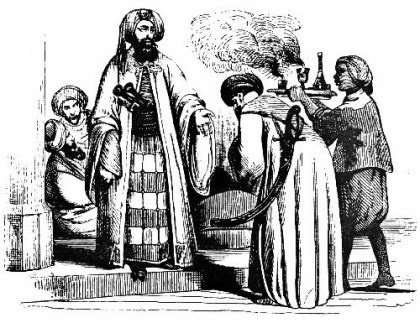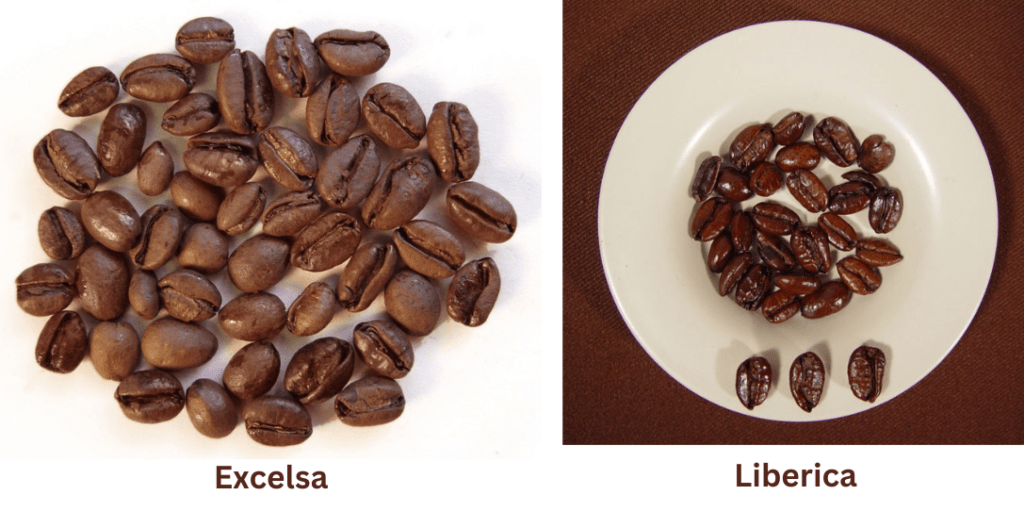Coffee is a super popular drink all around the world. More than 125 million people work in jobs related to coffee, helping to make a whopping 400 billion cups of it each year. Many folks feel like they need a cup of coffee in the morning to get their day started right. The secret ingredient in coffee that gives you a boost is called caffeine, but if you’re drinking decaf, you won’t get that kick. Coffee has been helping people out for a long time, but where did it come from and how did it become so popular? Let’s find out!
Story of discovery

There is no exact evidence of the origin of coffee, but according to legends, a very interesting story is told. In his book ‘Uncommon Grounds,’ the legendary writer Mark Pendergrast recounts a tale about a goat herder named Kaldi who lived sometime between the 6th and 9th centuries in Ethiopia.

One day, Kaldi noticed that some of his goats became quite energetic after chewing on the red berries of a certain plant. Curious, Kaldi tried them himself and soon found himself feeling just as hyper. As a religious person, Kaldi was concerned whether these red berries were halal or haram according to Islam. He took the berries to his head monk for verification. However, the monk, believing the berries to be from the devil, threw them into the fire. After a while, the burned berries emitted a very aromatic smell. So after the fire was extinguished, they picked up the roasted coffee beans that were left among the embers, ground them, and produced the first-ever cup of coffee. And that’s how coffee was first consumed by humans. This story is widely recounted as the discovery of coffee. Today, in Ethiopia, upwards of 15 million people depend on coffee for a portion of their livelihoods, as coffee grows wild throughout the country. It’s important to understand that Ethiopia is the birthplace of all coffee. While Ethiopians did consume and use coffee regularly, it became a significant part of their culture; they weren’t cultivating it for commercial purposes. Therefore, Ethiopia is credited with the first discovery of coffee and for coffee growing wild throughout the country.
Now, there is another story. Legend says that in ancient Yemen, there was a man called Sheikh Omar from Mocha, who was famous for his healing powers. For reasons unknown, Omar was banished from his community to a cave in the desert.

Hungry and desperate, Omar ate the berries from a nearby bush but was taken aback by their bitter flavor. Determined to make the most out of his meager meal, Omar roasted the beans, ground them up, and boiled them with water, producing an energizing liquid that sustained him for days. When his community learned of his magical concoction, he was invited to return.

Both of these accounts make for good stories, but we can’t know for sure if that’s how the first cup of coffee actually came to be. However, according to historical evidence, it seems that the credit for the first cup of coffee goes to both Yemen and Ethiopia.
Evidence
Coffee originally comes from Ethiopia, but the way we make and enjoy it today comes from Yemen. Yemen was the first place to start growing coffee as a business around the year 575 A.D. Back then, people in Yemen used to drink coffee during long religious ceremonies. They got their coffee from merchants who brought it from Ethiopia. In the 1600s, coffee quickly became popular in Europe. The Netherlands was the first European country to start growing coffee in places like Sri Lanka. Then, other European countries followed. In the 1700s, the French brought coffee to the Caribbean, and the Portuguese introduced it to Brazil. Later, in the late 19th century, the Spanish brought it to Central and South America. Now, coffee from these places is considered some of the best in the world.
But are all coffee beans the same? Well, there are many types, but the most common ones are:
- Arabica
- Robusta
- Liberica
- Excelsa

They all grow in a region called the Coffee Beans Belt. According to the International Coffee Organization, 20 billion pounds of coffee are produced in Bean Belt per year. “Arabica” is the most popular type, making up 60% of all coffee consumed worldwide. It’s mostly grown in Latin America and known for its sweet fruity and slightly acidic taste. However, it takes 7 years to fully mature and ready for harvest, so it’s more expensive.

The second most common type of coffee bean is “Robusta”. This is the one you’ll probably see in super markets and you neighborhood grocery store. They’re grown in Africa and Indonesia and it’s fairly common due to its high caffeine concentration, making it perfect for espressos and an energizing cup of Joe. But that also makes coffee from Robusta beans more bitter in taste.

Liberica and Excelsa beans are grown in certain part of Southeast Asia and therefore make up a really small percentage of the coffee consumed in the world. That’s also makes them pricier than Robusta Arabica beans. Currently Brazil is the world’s largest coffee exporter, pumping out 45 million bags per year of mainly Arabica beans.
Explore Fact
Coffee became deeply ingrained in European culture. It gradually replaced the traditional breakfast beverages of wine and beer, becoming a popular morning pick-me-up. However, despite coffee’s widespread acceptance in the West today, its history reveals a different story. Originally, coffee was viewed with suspicion and even considered the “devil’s drink” due to its Islamic origins. Christians in Europe were wary of its effects and saw it as a non-Christian drink. It wasn’t until 700 years after its discovery that the issue of coffee’s acceptability arose. Pope Clement VIII was faced with the decision of whether to condemn the drink. While some devout Catholics hoped he would ban it outright, the Pope took a more open-minded approach. He decided to taste coffee before making a judgment. Surprisingly, he found it enjoyable and declared that coffee was acceptable for Christians to drink. To reassure his followers that coffee posed no threat of demonic possession, the Pope symbolically baptized coffee beans, officially declaring them free from any association with Satan.
Since then, coffee has become a beloved beverage in the West, enjoyed by people from all walks of life.
The Birth of the Coffee House

The first coffee house in the world emerged during the 15th century in the Arabian Peninsula, known as “qahvah khaneh”. These establishments served as social hubs where people gathered to engage in various activities such as playing games, listening to music, and participating in lively political discussions. As coffee gained popularity among Europeans in the 17th century, coffee houses began to appear in Europe as well. Unlike taverns or bars, which were typically frequented by men discussing politics and daily affairs, coffee houses were seen as spaces for intellectuals. In Britain, they were often referred to as “penny universities” because for a penny, one could enjoy a cup of coffee and participate in stimulating conversations with businessmen and scholars. Initially, coffee houses were not open to everyone. In Britain and France, women were prohibited from entering these establishments, while in Germany, there were no such restrictions, allowing both men and women to join in discussions together.
Aside from fostering intellectual discourse, many people of the time believed in the medicinal properties of coffee. In 1652, a coffee advertisement claimed that coffee could cure various ailments such as headaches, lung coughs, dropsy, gout, and scurvy. Additionally, it was believed to help prevent miscarriages in pregnant women. Coffee House
Mass production
By the 18th Century, coffee had become the favored beverage in every country where it had been introduced. However, people continued to seek ways to enjoy it more conveniently. In 1901, a Japanese-American chemist named Satori Kato created the earliest version of instant coffee. He patented his invention in 1903, but it didn’t gain widespread popularity. The mass production of instant coffee is credited to George Washington, a Belgian inventor who owned production facilities in Brookline, New York. His product, known as “Red E Coffee,” revolutionized the coffee industry.

Instant coffee became particularly important towards the end of the First World War. In 1918, the U.S. military was purchasing 37,000 pounds of coffee per day. In situations where soldiers lacked access to water, they would consume instant coffee by pouring the powder directly into their mouths for a quick energy boost.
Explore Fact

During the Second World War, American soldiers stationed in Italy started to miss the way they typically enjoyed their coffee back home. In Italy, coffee was commonly consumed as either Espresso or Cappuccino, both of which were too strong and bitter for the American soldiers, who were accustomed to drip coffee. In a gesture of solidarity with the homesick Americans, Italian coffee shops began offering their espressos with a side of hot water for the soldiers to dilute the intensity of the espresso shot. Eventually, the baristas started to mix water directly with the espresso for the G.I.s, and this concoction came to be known as an “Americano.”
Today, coffee continues to reign supreme. The global coffee industry earns an estimated $60 billion annually. Starbucks alone has 29,865 shops quenching the coffee-thirst of 78 markets around the world. No matter where we are from, we can all agree that a good cup of coffee can make our day. And you? How do you like your coffee?
